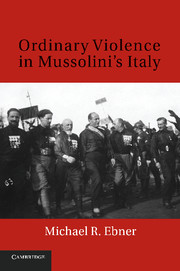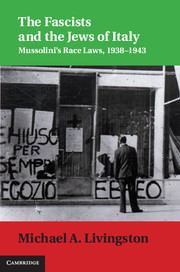Ordinary Violence in Mussolini's Italy
Between 1926 and 1943, the Fascist regime arrested thousands of Italians and deported them to island internment colonies and small villages in southern Italy. Ordinary Violence in Mussolini’s Italy analyses this system of political confinement and, more broadly, its effects on Italian society, revealing the centrality of political violence to Fascist rule. In doing so, the book shatters the widely accepted view that the Mussolini regime ruled without a system of mass repression. The Fascist state ruled Italy violently, projecting its coercive power deeply and diffusely into society through confinement, imprisonment, low-level physical assaults, economic deprivations, intimidation, discrimination, and other quotidian forms of coercion. Moreover, by promoting denunciatory practices, the regime cemented the loyalties of “upstanding” citizens while suppressing opponents, dissenters, and social outsiders. Fascist repression was thus more intense and ideological than previously thought and even shared some important similarities with Nazi and Soviet terror.
- Argues that Italian Fascism was more violent than previously thought
- Proposes that the purpose of political violence was similar to Nazi or Soviet terror
- Shows the impact of the violence on everyday life
Reviews & endorsements
"Michael Ebner has written an engaging book on violence in Fascist Italy that focuses primarily on the internal exile of individuals accused of political crimes. It will appeal to students of Fascist Italy and also to those with a more general interest in the workings of a police state." -Carl Ipsen, The Journal of Modern History
"Just when we had become accustomed to viewing the Italian Fascist regime in the soft focus of its consensual and consent-building cultural policies and its version of aestheticized politics, along comes this excellent book..." -Philip Morgan, European History Quarterly
Product details
January 2014Paperback
9781107617742
306 pages
229 × 152 × 18 mm
0.45kg
10 b/w illus. 2 tables
Available
Table of Contents
- 1. Introduction: the Fascist archipelago
- 2. Squad violence
- 3. Institutions of Fascist violence
- 4. Breaking the Antifascists, 1926–34
- 5. The archipelago
- 6. The politics of pardons
- 7. Everyday political crime
- 8. Ordinary Fascist violence
- 9. The politics of everyday life
- 10. Conclusion.





